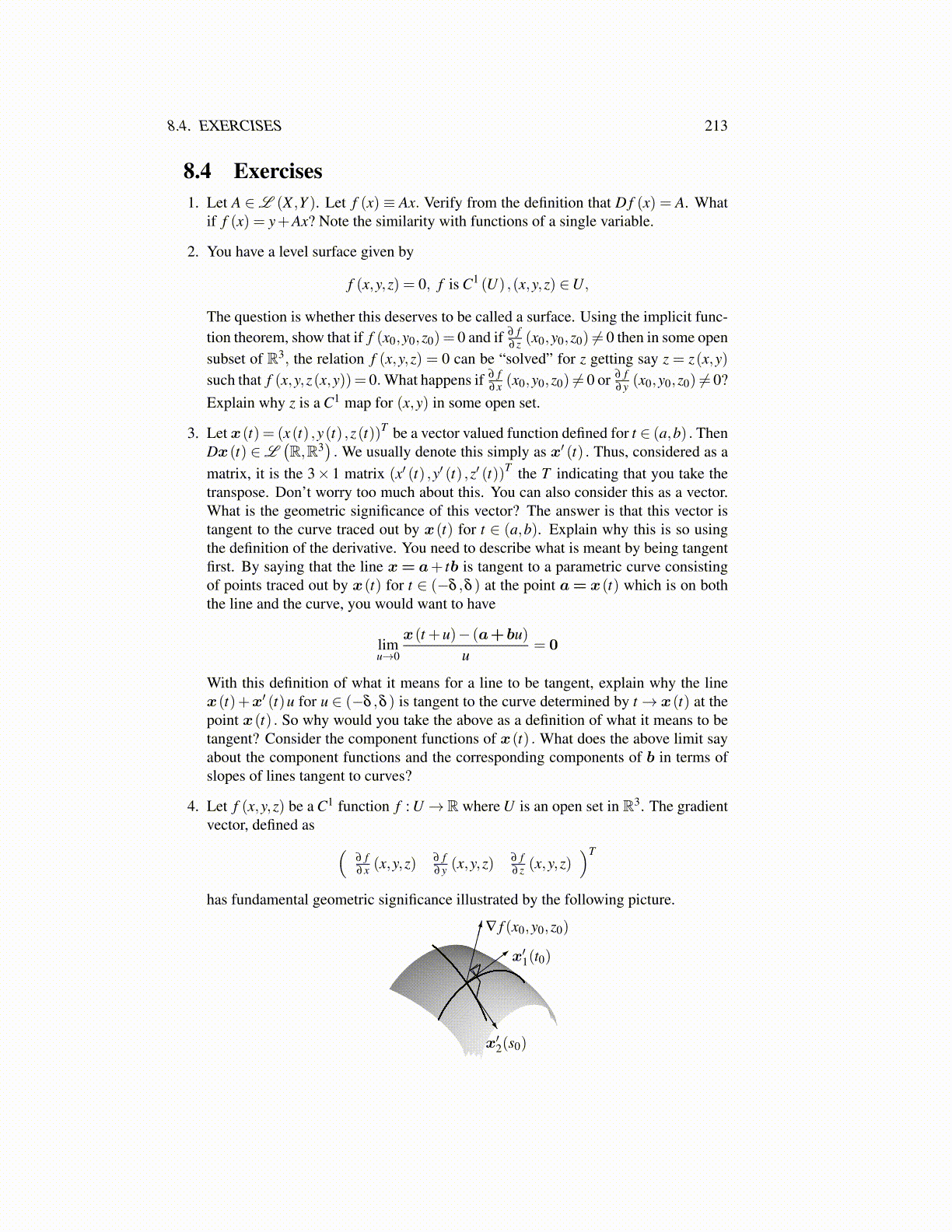
8.4. EXERCISES 213
8.4 Exercises1. Let A ∈L (X ,Y ). Let f (x)≡ Ax. Verify from the definition that D f (x) = A. What
if f (x) = y+Ax? Note the similarity with functions of a single variable.
2. You have a level surface given by
f (x,y,z) = 0, f is C1 (U) ,(x,y,z) ∈U,
The question is whether this deserves to be called a surface. Using the implicit func-tion theorem, show that if f (x0,y0,z0)= 0 and if ∂ f
∂ z (x0,y0,z0) ̸= 0 then in some opensubset of R3, the relation f (x,y,z) = 0 can be “solved” for z getting say z = z(x,y)such that f (x,y,z(x,y))= 0. What happens if ∂ f
∂x (x0,y0,z0) ̸= 0 or ∂ f∂y (x0,y0,z0) ̸= 0?
Explain why z is a C1 map for (x,y) in some open set.
3. Let x(t) = (x(t) ,y(t) ,z(t))T be a vector valued function defined for t ∈ (a,b) . ThenDx(t) ∈L
(R,R3
). We usually denote this simply as x′ (t) . Thus, considered as a
matrix, it is the 3× 1 matrix (x′ (t) ,y′ (t) ,z′ (t))T the T indicating that you take thetranspose. Don’t worry too much about this. You can also consider this as a vector.What is the geometric significance of this vector? The answer is that this vector istangent to the curve traced out by x(t) for t ∈ (a,b). Explain why this is so usingthe definition of the derivative. You need to describe what is meant by being tangentfirst. By saying that the line x= a+ tb is tangent to a parametric curve consistingof points traced out by x(t) for t ∈ (−δ ,δ ) at the point a= x(t) which is on boththe line and the curve, you would want to have
limu→0
x(t +u)− (a+bu)u
= 0
With this definition of what it means for a line to be tangent, explain why the linex(t)+x′ (t)u for u ∈ (−δ ,δ ) is tangent to the curve determined by t→ x(t) at thepoint x(t) . So why would you take the above as a definition of what it means to betangent? Consider the component functions of x(t) . What does the above limit sayabout the component functions and the corresponding components of b in terms ofslopes of lines tangent to curves?
4. Let f (x,y,z) be a C1 function f : U → R where U is an open set in R3. The gradientvector, defined as (
∂ f∂x (x,y,z)
∂ f∂y (x,y,z)
∂ f∂ z (x,y,z)
)T
has fundamental geometric significance illustrated by the following picture.
∇ f (x0,y0,z0)
x′1(t0)
x′2(s0)